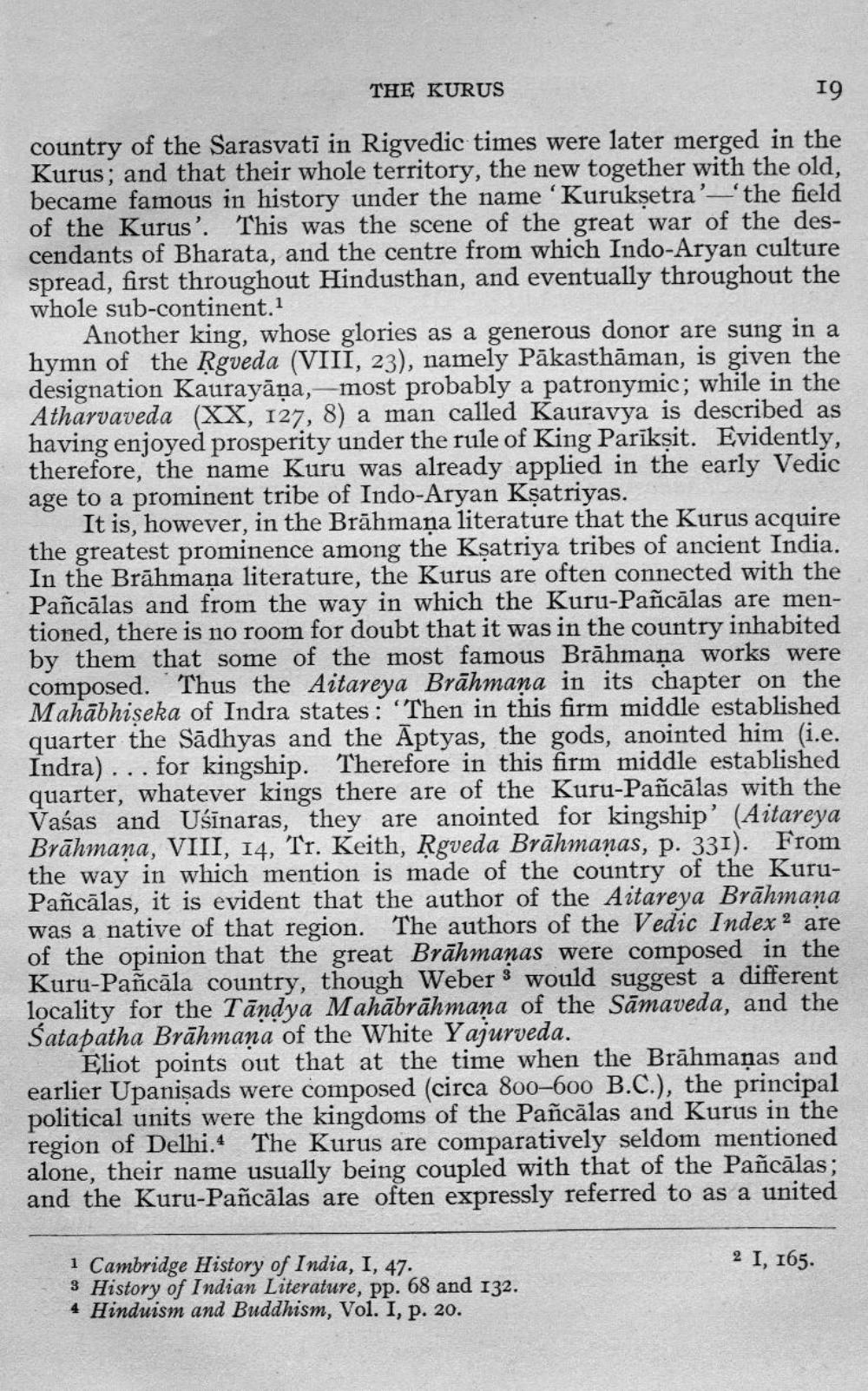________________
19
country of the Sarasvati in Rigvedic times were later merged in the Kurus; and that their whole territory, the new together with the old, became famous in history under the name 'Kurukṣetra'-'the field of the Kurus'. This was the scene of the great war of the descendants of Bharata, and the centre from which Indo-Aryan culture spread, first throughout Hindusthan, and eventually throughout the whole sub-continent.1
THE KURUS
Another king, whose glories as a generous donor are sung in a hymn of the Rgveda (VIII, 23), namely Päkasthaman, is given the designation Kaurayana, most probably a patronymic; while in the Atharvaveda (XX, 127, 8) a man called Kauravya is described as having enjoyed prosperity under the rule of King Parikṣit. Evidently, therefore, the name Kuru was already applied in the early Vedic age to a prominent tribe of Indo-Aryan Kṣatriyas.
It is, however, in the Brahmana literature that the Kurus acquire the greatest prominence among the Kṣatriya tribes of ancient India. In the Brahmana literature, the Kurus are often connected with the Pañcālas and from the way in which the Kuru-Pañcālas are mentioned, there is no room for doubt that it was in the country inhabited by them that some of the most famous Brāhmaṇa works were composed. Thus the Aitareya Brahmana in its chapter on the Mahabhiṣeka of Indra states: "Then in this firm middle established quarter the Sadhyas and the Aptyas, the gods, anointed him (i.e. Indra). for kingship. Therefore in this firm middle established quarter, whatever kings there are of the Kuru-Pañcalas with the Vasas and Usinaras, they are anointed for kingship' (Aitareya Brahmana, VIII, 14, Tr. Keith, Rgveda Brahmanas, p. 331). From the way in which mention is made of the country of the KuruPañcālas, it is evident that the author of the Aitareya Brahmana was a native of that region. The authors of the Vedic Index 2 are of the opinion that the great Brahmanas were composed in the Kuru-Pañcala country, though Weber would suggest a different locality for the Tandya Mahabrahmana of the Samaveda, and the Satapatha Brahmana of the White Yajurveda.
Eliot points out that at the time when the Brāhmaṇas and earlier Upanisads were composed (circa 800-600 B.C.), the principal political units were the kingdoms of the Pañcālas and Kurus in the region of Delhi. The Kurus are comparatively seldom mentioned alone, their name usually being coupled with that of the Pañcalas; and the Kuru-Pañcālas are often expressly referred to as a united
1 Cambridge History of India, I, 47.
3 History of Indian Literature, pp. 68 and 132.
4 Hinduism and Buddhism, Vol. I, p. 20.
2 I, 165.




